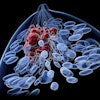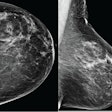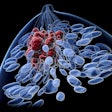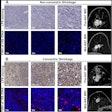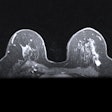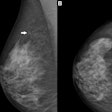Monday, December 1 | 12:45 p.m.-1:15 p.m. | BRS254 | Lakeside Learning Center
Adding digital breast tomosynthesis (DBT) to full-field digital mammography (FFDM) and ultrasound improves the diagnostic accuracy of breast lesion workup, according to researchers from King's College Hospital in London.When the three modalities were used together, the percentage of cases classified as indeterminate or suspicious went down and those identified as malignancies went up, Dr. Asif Iqbal and colleagues found.
The study included 237 cancer patients who had all three exams. Five specialist breast radiologists conducted the diagnostic workups, viewing each of the exams sequentially before recording any findings as indeterminate, suspicious, or malignant.
Histology identified 243 cancers. Mammography plus ultrasound identified 33 cases as indeterminate (13.5%), 49 as suspicious (20.1%), and 161 as malignant (66.2%). When tomosynthesis was added, 26 cases were categorized as indeterminate (10.7%), 44 as suspicious (18.1%), and 173 as malignant (71.2%).
DBT improved the diagnostic accuracy of mammography plus ultrasound, as fewer lesions were classified as indeterminate or suspicious, the researchers concluded.



